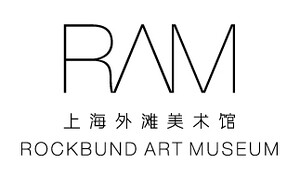September 29–October 4, 2017
Rockbund Art Museum (RAM) presented the annual art project RAM HIGHLIGHT 2017: DISPLACE, which was open from September 29 to October 4, 2017. Encompassing various strands of visual, audio and performative elements, DISPLACE transformed the exhibition into a boundary-breaking and participatory experience. The ten commissioned artists from around the world reinforced the project’s dynamics of change, circulation and activation.
RAM HIGHLIGHT 2017: DISPLACE composed a powerful artistic discourse with events that abounded in energy and wonder. Examples included performances that continued through midnight till dawn, allowing spectators to follow time’s plunge into darkness; interconnections between eco-care and family relationships, which generated new contexts; social media interventions, live bands and even food, all of which sparked unexpected encounters. Larys Frogier, Director of RAM, states, “Each artist has conceived a project that often stands within the tension between different art practices, switching social positions and media, and creating ambiguous situations where the acts of looking, showing, stating, performing are never fixed but always extended, exchanged, mixed, embodied and addressed as a full act of creation and as a necessary process of thinking.”
First launched in 2016, RAM HIGHLIGHT is a new annual art project and a valuable addition to the museum’s existing artistic programming. Featuring creative performances and unexpected connections with the audience, RAM HIGHLIGHT commissions one artist or artist group to intervene in the museum for 6–10 days. The inaugural RAM HIGHLIGHT 2016 commissioned the Shanghai-based artist Zhang Ding, who presented the art project Devouring Time. By inviting the audience to a highly regulated and ceremonial process of dining, the project investigated topics from the realities of the society and standards of values to regulative infrastructures.
RAM HIGHLIGHT can be regarded as a brand new project arising from years of observation, study and cultivation. Since 2010, RAM has constantly been exploring performance artworks in both exhibitions and public education programs. Prominent performance explorations, for instance, include Wu Yulu’s Robot Factory in the exhibition Cai Guo-Qiang: Peasant Da Vincis (2010); Paola Pivi’s large-scale installation It’s a Cocktail Party (2012); as well as the exhibitions UGO RONDINONE: BREATHE WALK DIE (2014) and Philippe Parreno: Synchronicity (2017). In terms of public education programming, Action Asia and SAVAKA: Asia Experimental Music Currents have been especially noteworthy. Both projects engaged in systemic and long-term investigations into the relationships between performance and sound art, the results of which were then presented to the public. In 2015 RAM collaborated with Zhang Yuan to curate the Being in Asia series, exploring cross-cultural relationships among Asian societies through the lens of corporeality. Such exhibitions and public programs indicate that the audience in Shanghai is fully ready to be challenged with new ways of observation and alternative aesthetic approaches. Meanwhile, “performance”—either as an art form or as a cognitive category—remains highly significant in contemporary art research.
RAM HIGHTLIGHT focuses particularly on art projects endeavoring to diversify current forms of artistic expressions with alternative aesthetic approaches that extend received cognitive frameworks. It also strives to challenge existing exhibition formats and consciously reflects on the multiple relationships between art and audiences. At the same time, RAM HIGHLIGHT invites speakers from various specialized fields for its public lecture programming, including scholars, artists and curators, so as to bring in varied voices in order to discuss the changing meaning of the arts, to build a collaborative network between China and other regions, and to investigate possible ways to tie the current situation back to archival sources.
Through RAM HIGHLIGHT, attempts are made to understand how the category of “performance art” is challenged in the contemporary context and what new definitions can be generated. Hopefully, RAM will be able to expand current horizons in discussions about contemporary artistic practices and to propel critical thinking forward.
List of artists:
Moriah Evans, contact Gonzo, Nikima Jagudajev, Nunu Kong, Asad Raza, Rafay Rashid, Tang Dixin, Mårten Spångberg, Amalia Ulman, Andros Zins-Browne


